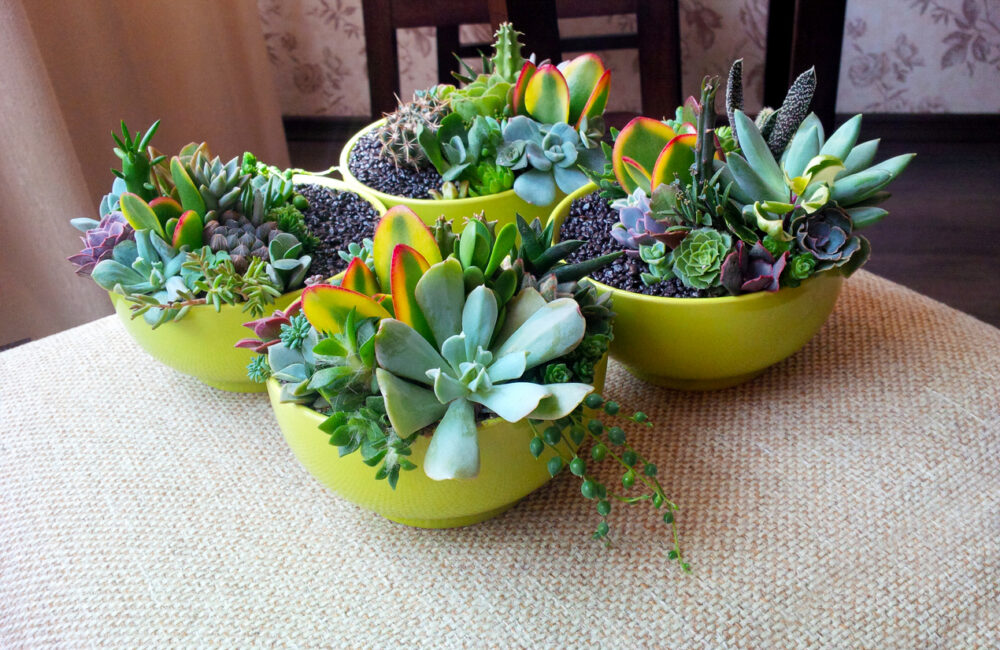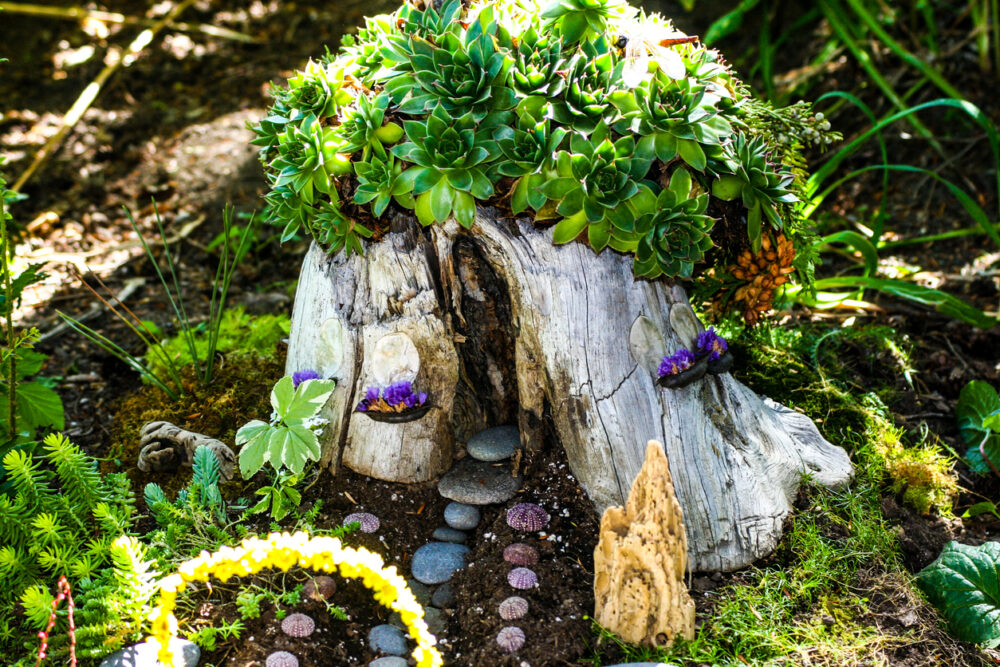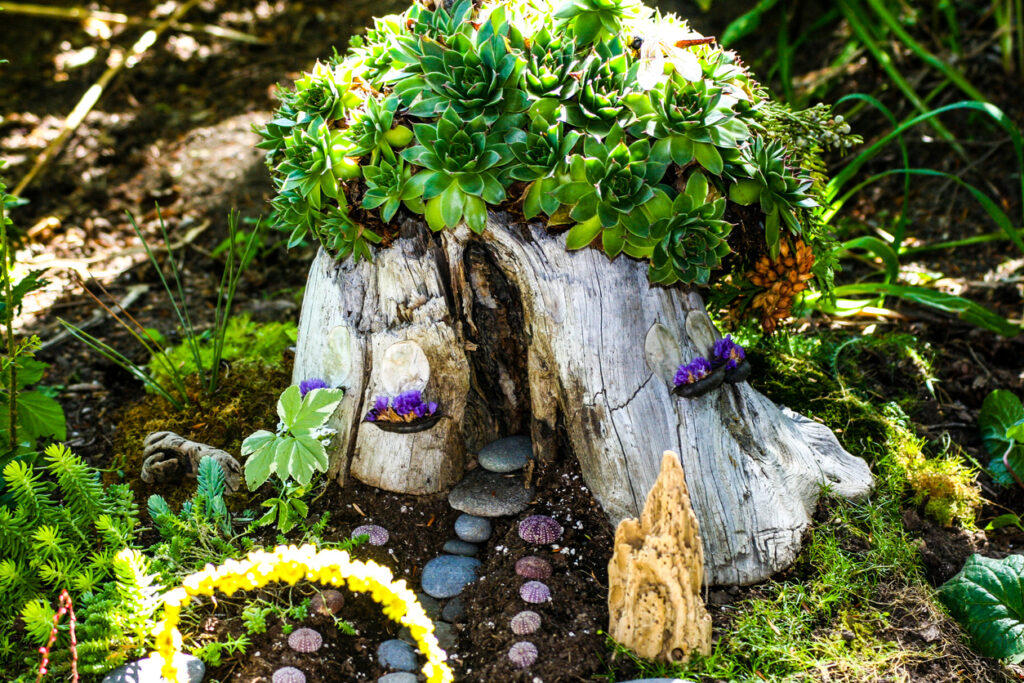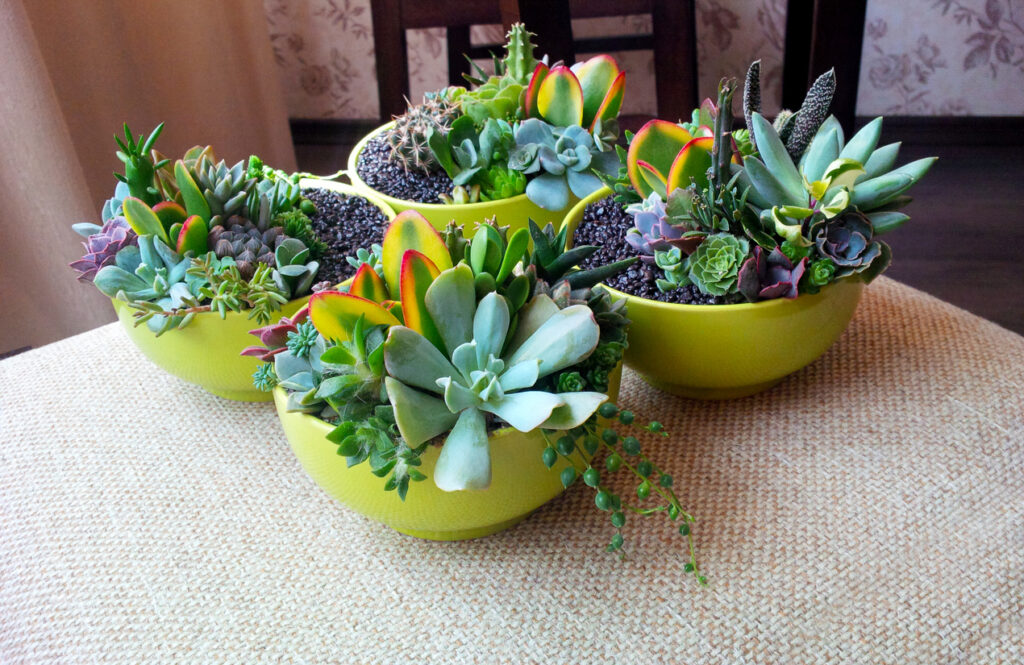Succulent Fairy Garden Care – How To Create And Care For Succulent Fairy Gardens
Even if you don’t believe in fairies, you’d still want to build a succulent fairy garden. Not so long ago, fairies were part of the gardening lore. The mythical fairies were believed to bring luck and good fortune to the garden of the household they choose to stay in. So people used to decorate their gardens to lure them.
Fairies soon went out of fashion but succulent fairy gardens remained as popular as ever. Rather than plan and create a stunning landscape to attract good luck, you’re building a miniature garden for your own pleasure. They are simple to create and easy to maintain? Besides a few tools and accessories, all you need is your unlimited imagination and a few hours of your time.
Succulent Fairy Garden Types
Miniature gardens or succulent fairy gardens as they’re sometimes called come in different types, shapes, and sizes. But while the sky’s the limit when it comes to what goes into the container, most succulent fairy gardens fall under two categories.
Outdoor Miniature Gardens
You’d want to create an outdoor succulent fairy garden for many reasons. It’s not just that being out in the open under the bright sunlight, fresh air, and the occasional rainfall seems like the ideal setting for a garden. The outdoorsy setting is also full of pollinators and good insects that most succulents need to survive and thrive. Of course, it all depends on the type of weather you get in your zone. Sweltering heat in the summer and freezing temperatures in the winter are not ideal for an outdoor garden.
Indoor Fairy Gardens
If the weather is anything but ideal and you worry that your succulents might not survive outdoors, then an indoor option is available for you. Here you have almost total control over the temperature, light, and humidity. You can grow your plants in an indoor succulent fairy garden without worrying about the weather outside. Whatsmore, you also get to enjoy the creative gardening spectacle you created from the comfort of your couch without having to go outside.
Containers for Succulent Fairy Gardens
The more options you have, the more puzzled you get. And since succulent fairy gardens need a container to grow in, the first question on your mind would be, which container to choose. The answer is simple. When it comes to miniature garden containers, size, material, and drainage should be your guidelines. Here are some container considerations to keep in mind.
- The size of the container matters since you’re not just planting a couple of succulents in the garden. You’re also adding accessories and decorations. So use a medium to a large container for this purpose.
- Choose terracotta or plastic containers for their durability and appeal. Glass and fish bowls are not ideal here because they don’t drain well.
- Make sure the container has plenty of drainage holes at the bottom since succulents don’t like to get their feet wet.
- Whether you’re buying a brand new container or repurposing an old one, you should always clean it before you use it. Fungal spores and chemical residue can impact the health and growth of the succulents.
Design Ideas for Succulent Fairy Gardens
So that takes care of the container but what about the design itself? It’s easy to say to let your imagination go wild and unfettered. Because we all know, when it comes time to actually create the succulent fairy garden, most of us would get stuck as our imagination goes belly up. So here are a few design ideas to get you started.
- Use gnomes, fairies, and other fairytale characters liberally in your design.
- Add in pebbles, colored rocks, and wooden crafts.
- Figures of frogs, mushrooms, and snails won’t look out of place in the container.
- Place a house, pets, insects, furniture, and gardening tools for dramatic effect.
- Choose the right theme for your design. For inspiration, you can go either with a medieval, urban, desert, woodland, or tropical theme.
- Use accessories judiciously. Too many of those and the garden will look cluttered; too few and the garden looks underdeveloped.
Succulent Fairy Garden Accessories
Needless to say, accessories make or break the succulent fairy garden. Not only do they create the right atmosphere and give depth to your immersive make-believe little world, but they also make it look real. The pieces you choose should look natural in the theme you choose. Frogs and gnomes for example would look out of place in a desert landscape and are better suited to a woodland theme.
Use ceramic figurines to your heart’s content but don’t overdo it. This is still a “garden” which means that the “plants” should be the focal point. Keep your accessories well-spaced and try to avoid covering the plants with a large figure that casts a shadow on the succulents.
Best Plants for Succulent Fairy Gardens
While worrying about the size of the container and whether a gnome fits in a tropical theme or not, don’t forget about the plants themselves. Here’s a list of some popular plants to grow in your succulent fairy garden.
Echeveria
This is not succulent but a whole family of plants. They all share the same qualities of being evergreen and having unique leaves in the shape of rosettes. Some popular echeveria options include Blue Rose Echeveria, Painted Lady, and Ghost Echeveria. The species come in different shapes and colors and you can mix and match to create the right color schemes for your design.
Donkey’s Tail
The stems of this plant are long and overarching just like the tail of a beast of burden. Since we’re talking about a succulent for a fairy garden, you should choose the dwarf varieties of this species. They won’t overcrowd the other plants nor would they obscure your accessories either.
Swamp Stonecrop
This perennial succulent is the ideal plant for a submerged theme. It is one of the few succulents that thrive in waterlogged soil. So choose it only if you have that kind of miniature garden design in mind. In the summer months, white flowers bloom on top of a slender stalk in the middle of the plant.
Ragworts
A member of the daisy family, ragworts are unique succulents with leaves that look like beads. The leaves are usually green but some varieties have gray-green leaves that grow on long stems. The plants have visually stunning qualities but they have a fast growth rate so they tend to overshadow the companion plants in the succulent fairy garden.
Panda Plant
The meaty leaves of the panda plant are usually green with brown or maroon highlights. A native of Madagascar, it is compact in size which makes it a perfect choice for your tropical-themed miniature garden. It doesn’t require much care and behaves well in the company of other succulents.
How to Create a Succulent Fairy Garden
Now that you have everything you need including the right succulents and the accessories to go with your theme, you’re ready to create your first succulent fairy garden. The steps are no different from making a succulent terrarium or planting any other succulent for that matter.
- Whether you’re creating your miniature fairy garden indoors or outdoors, you should place it in a spot that gets the morning sun. On the patio or a window sill facing the east or north would be ideal.
- Choose different succulents to go in your garden. They should vary in size, height, and color to create the desired effect.
- Before you start, it’d be better to draw your design on a piece of paper and use as accurate measurements as you can.
- Fill the container with a good-quality succulent potting mix. Depending on your design, you shouldn’t fill the container to the rim as you would with any other gardening project. Leave space for the accessories.
- Dig a hole in the allocated place for each succulent and plant it in it. Cover the holes with soil and pack it firmly to chase out air pockets.
- Water the soil to give the plants a good start.
- Now apply your design. Add in the accessories you have collected. If an accessory requires to be firmly installed in the soil, place it away from the plants so as not to damage the roots.
- Add the rest of the pebbles, wooden racks, ceramic figurines, and light and music effects.
Succulent Fairy Garden Care
When you’re satisfied with your creative work and the succulent fairy garden looks its best, you can now sit back and delight in the beauty you made with your own hands. Occasionally you’ll need to adjust the position of the miniature garden, give the plants some water, and feed them. These are just regular maintenance routines that all succulents need.
Soil
Since we’re talking about succulents, you should use a cacti potting mix. It is loose soil that is also well-drained. The only difference here from planting succulents in the garden is that you’re using less soil than usual. In other words, there’s a limited amount of nutrients in the soil to feed all the succulents you plant in the container. So make sure the soil is of top quality.
Water
Succulents in general are drought tolerant and don’t need much watering. In fact, overwatering the plants might do more harm than good and cause root rot and fungal infections. Also, consider the limited amount of soil when you’re watering the plants. If you’re using a container that doesn’t have drainage holes, then you should use a spray bottle to water the plants. Always aim to get the soil moist but not wet.
Fertilizer
Sooner or later the nutrients in the soil will run out as the succulents grow and demand more from the soil. Here again, you should factor in the small size of the soil when deciding on the right dose of fertilizer. Experts recommend using mild compost tea such as rabbit manure tea to feed the plants in the succulent fairy garden. Use an eyedropper to fertilize the plants. That way you’ll have more control not just on the fertilizer dosage but also the moisture in the soil.



